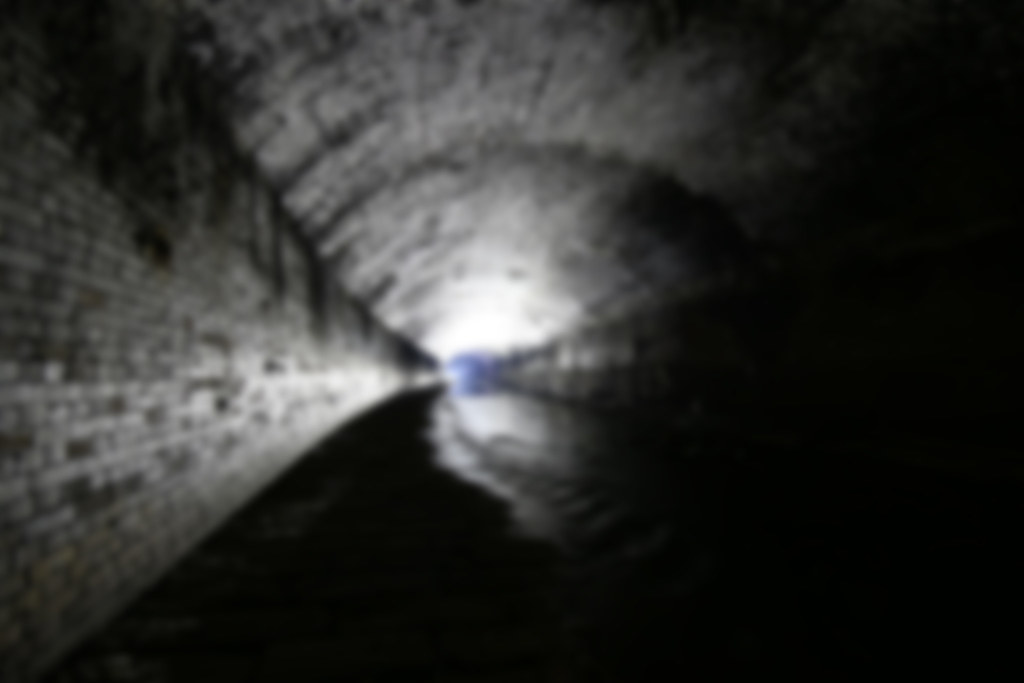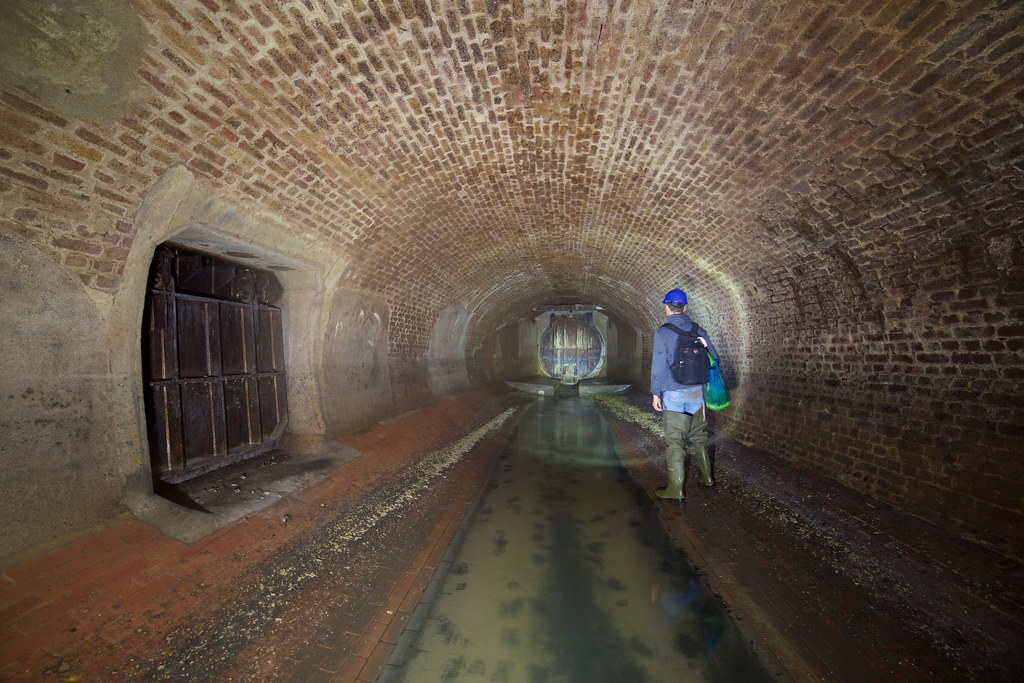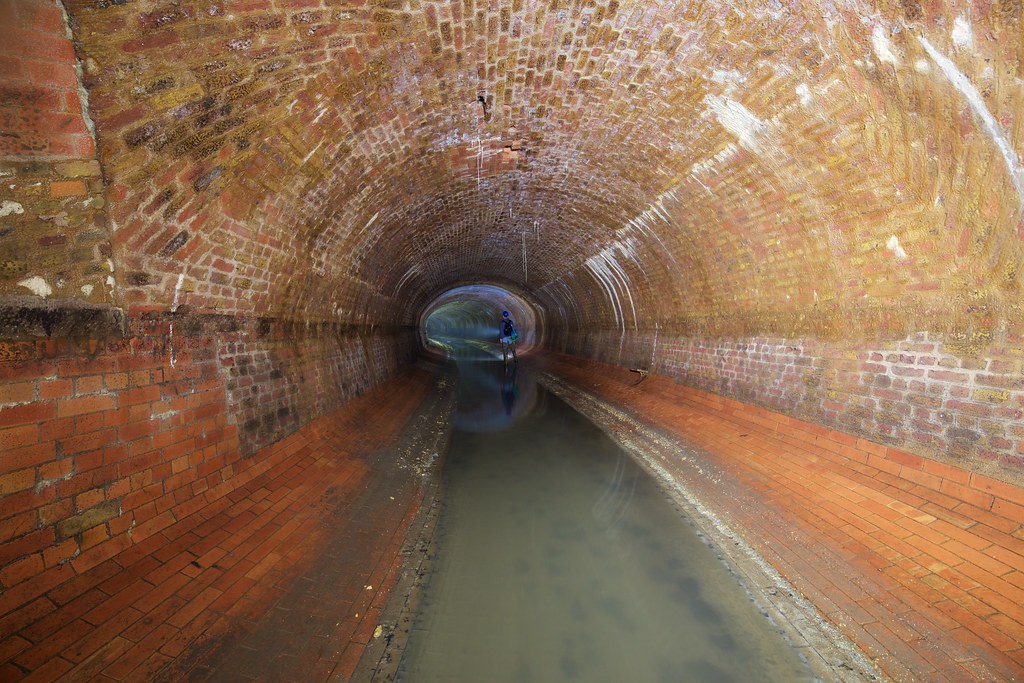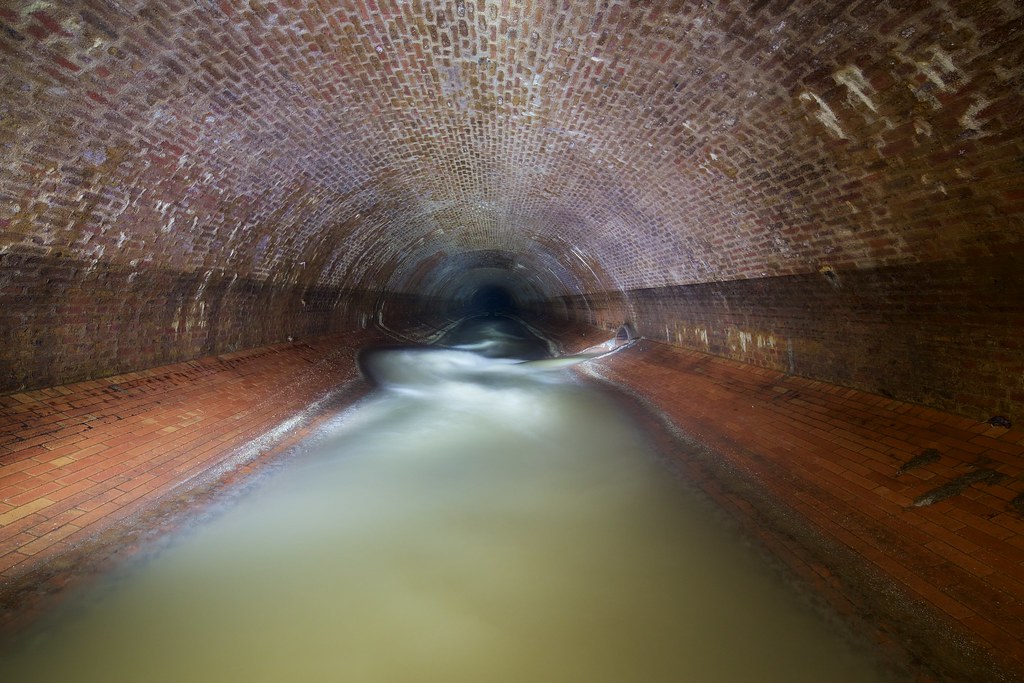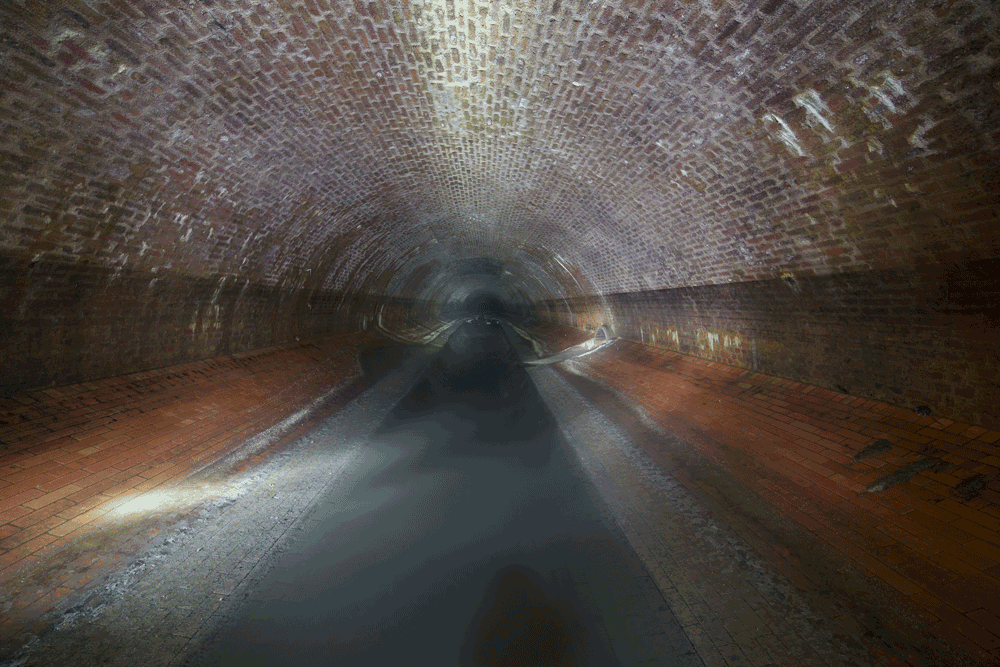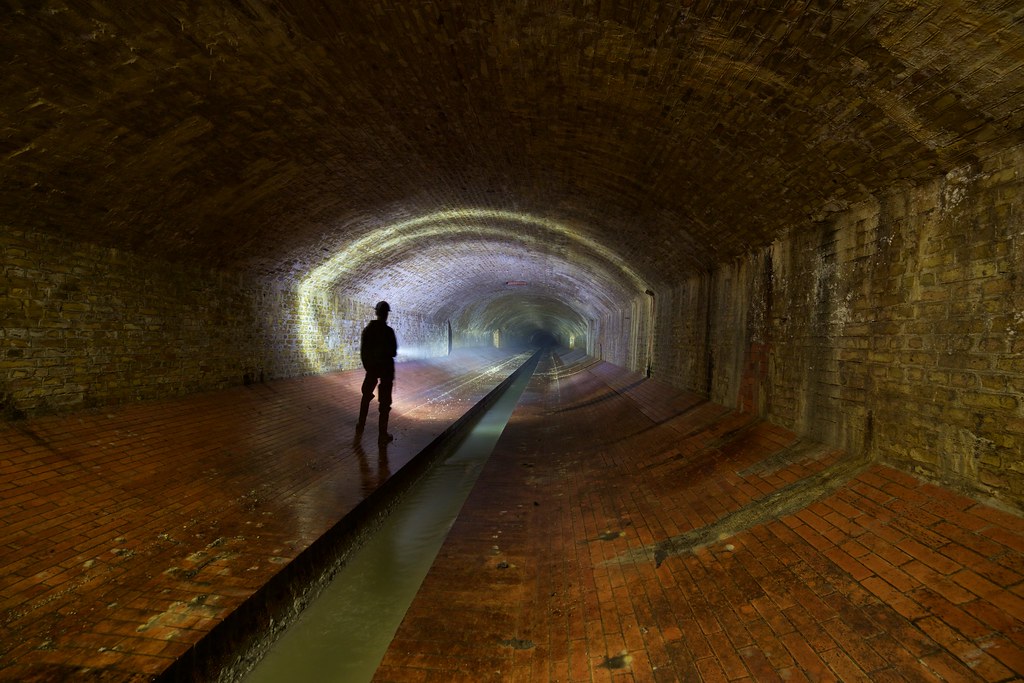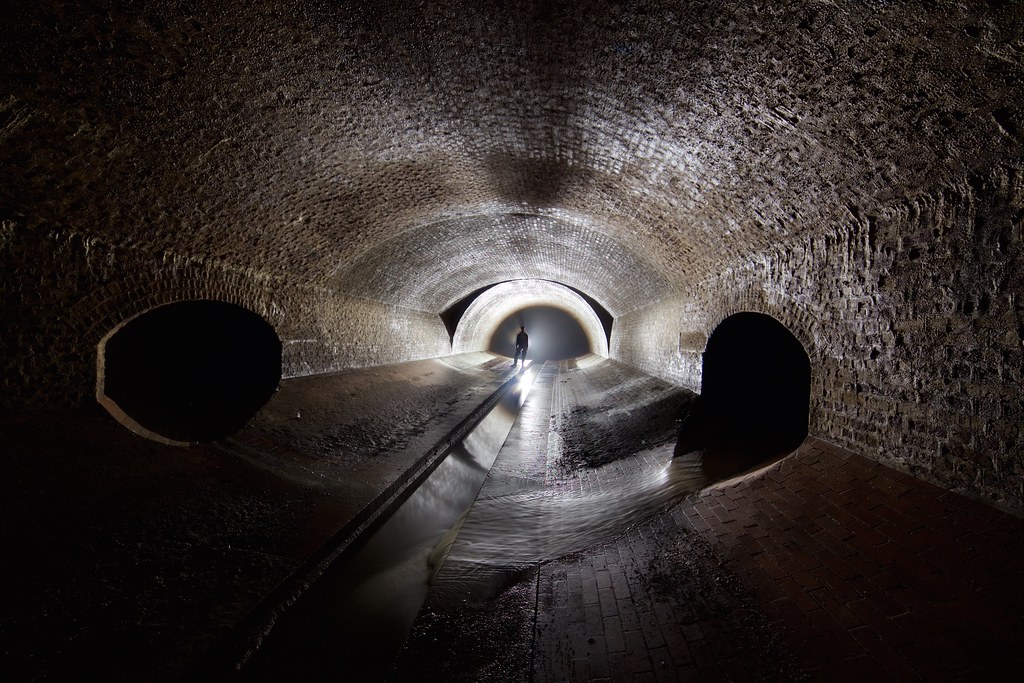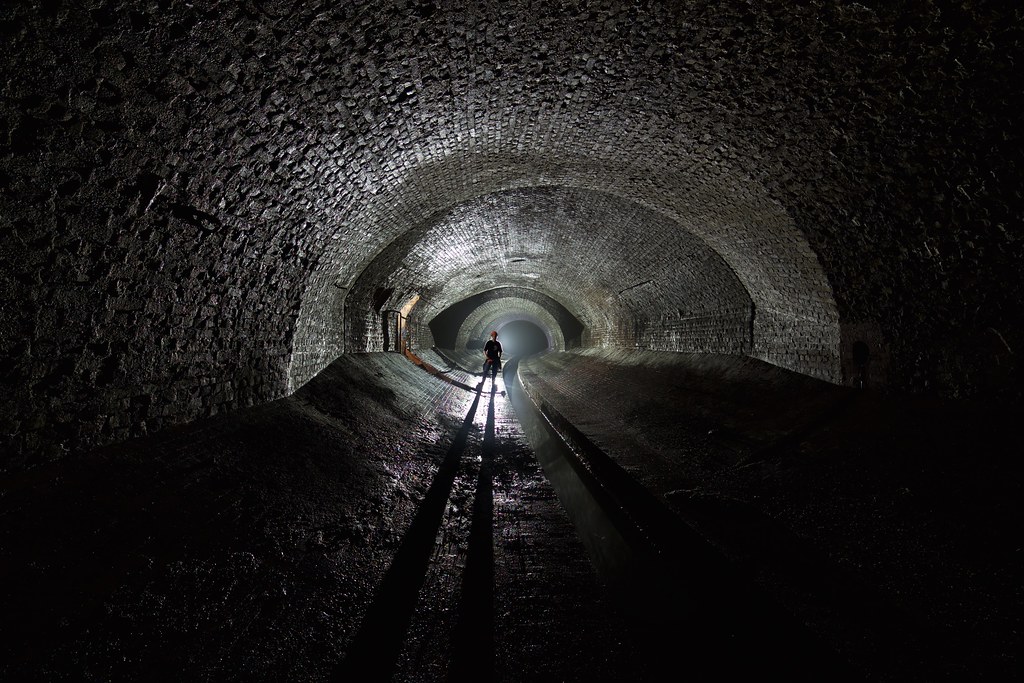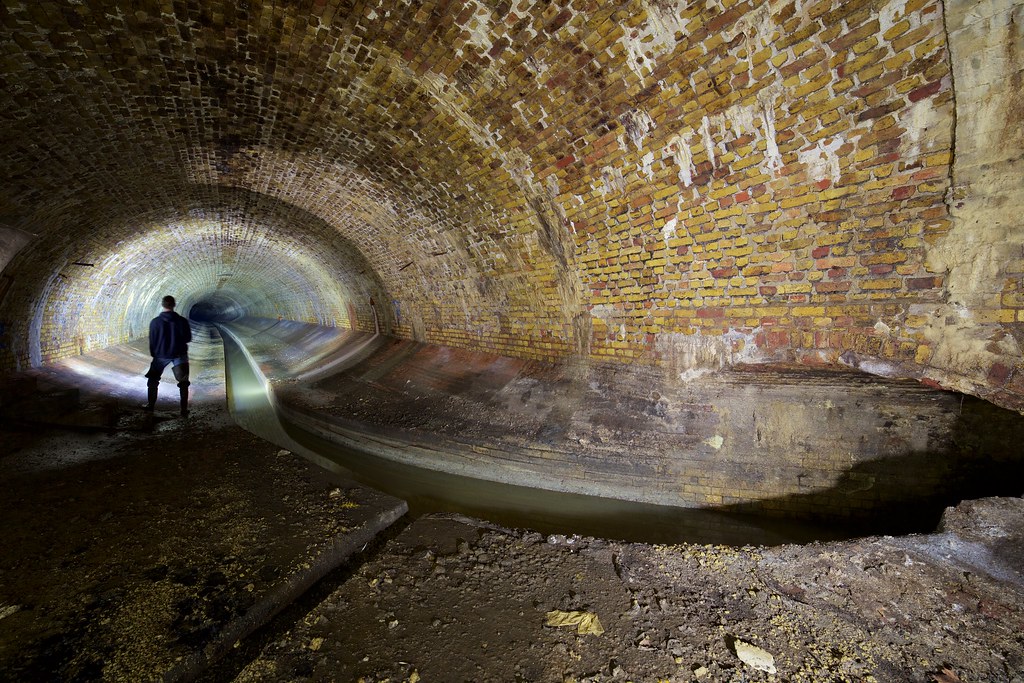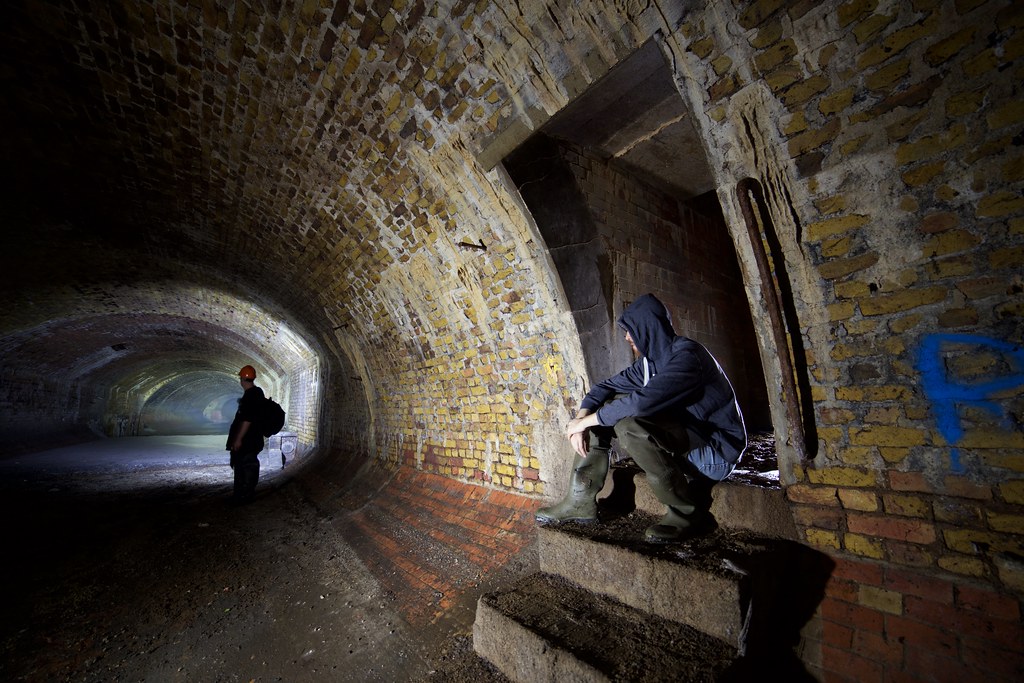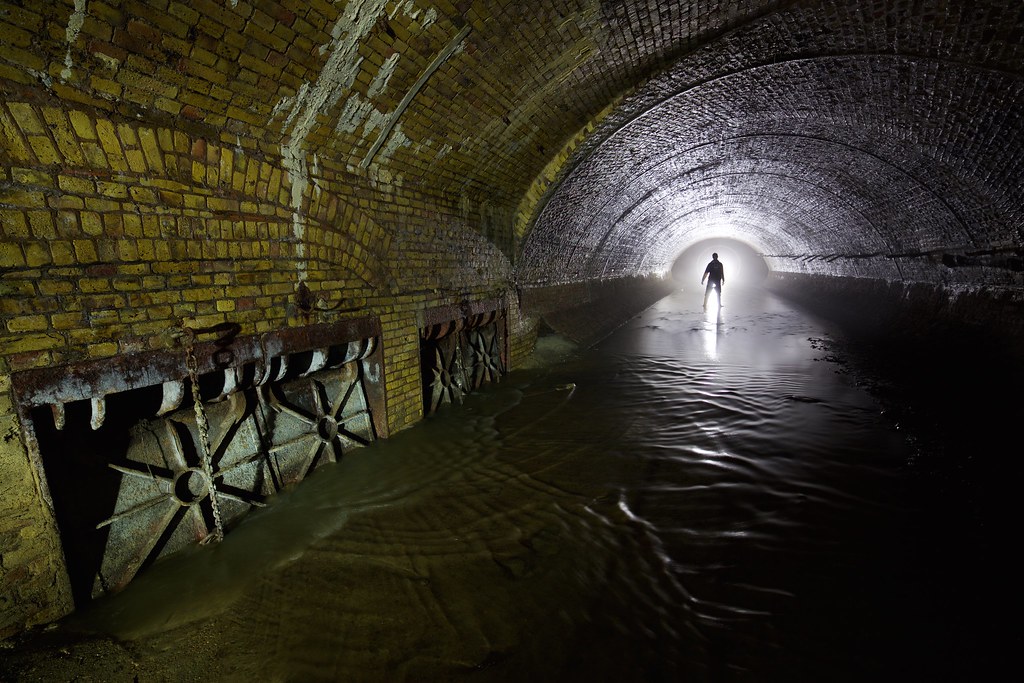The Tyburn originally rose in South Hampstead and flowed southeast to the Thames; it became covered over and incorporated in the sewer system as time progressed. What remains is now part of the King's Scholar's Pond sewer.
I've had a few trips down the Tyburn over the years, starting with a photoless trip down the upmost section at St. John's Wood, travelling downstream to pop out on a busy street full of shoppers. There must have been 8 sewer clad guys climbing out a manhole and not one person gave us a second glance, <3 London. Another time a long walk from Hyde Park gave a look at a very steamy KSP from the overflow chamber at the start of The Egg. This time I went with TheVicar to explore the lower part, I had seen photos before and thought the large brick arches would be impressive to see.
A large flap marked the beginning of this section, the air was good but saturated with the smell of cheese and onion. Crumbs of fat lay along the waterline and the surface of the water was thick with an oily film. The rumbling of a nearby tube tunnel is common enough in London drains but along with standing by the flaps, it put me on edge.
We later heard roaring from downstream lasting for around 20 seconds before subsiding. It occurred a few more times as we worked our way downstream and it became apparent a 3ft concrete side pipe was the culprit. It appeared to dump it's load quite frequently with some force filling up the local area substantially, the time between each discharge long enough for it to drain away.
There were plenty of small side pipes discharging nuggets straight from the bowl of whatever convenience lay above. There were only two other side pipes joining the tunnel though neither was big enough to warrant further exploration. A channel in the tunnel took the normal level flow and meant the downstream section could be walked rather than waded.
Eventually the channel veered off into a tunnel that lead to the Northern Low Level Sewer. Stormwater flow would continue down the main tunnel into a concrete pipe that lead to the Thames. The outfall flap must have been broken and cold fresh water was making it's way upstream with the tide and down through a set of flaps, at least doubling the amount of water entering the interceptor.
